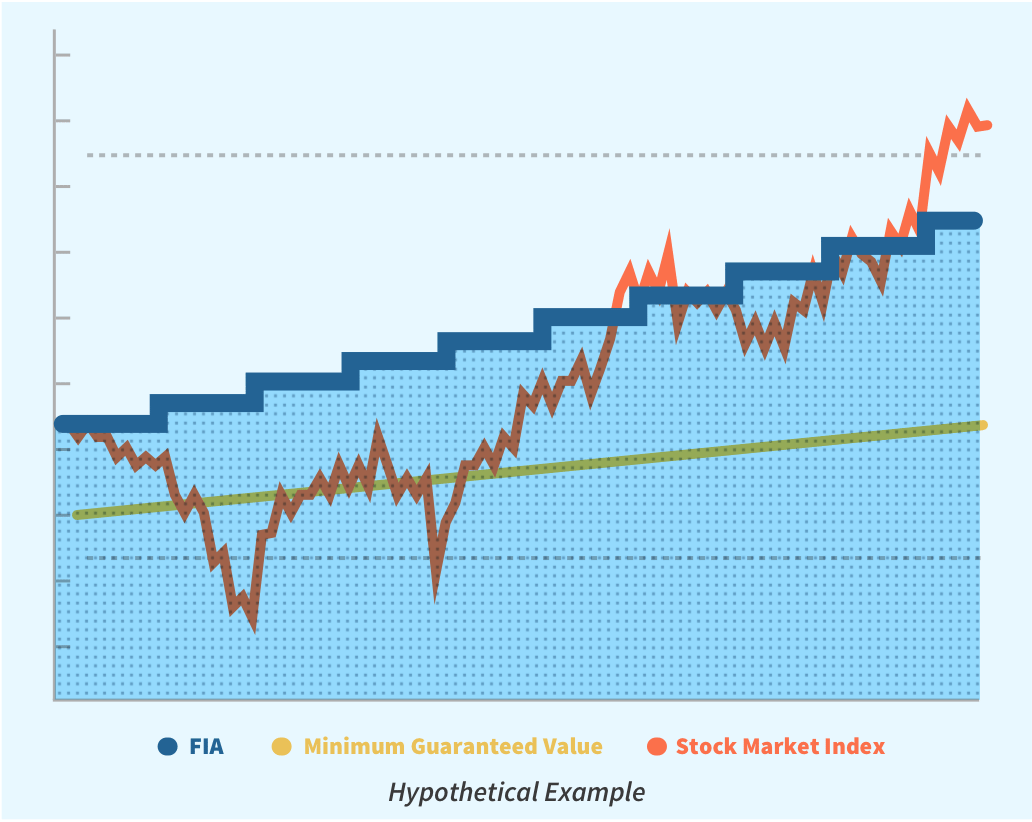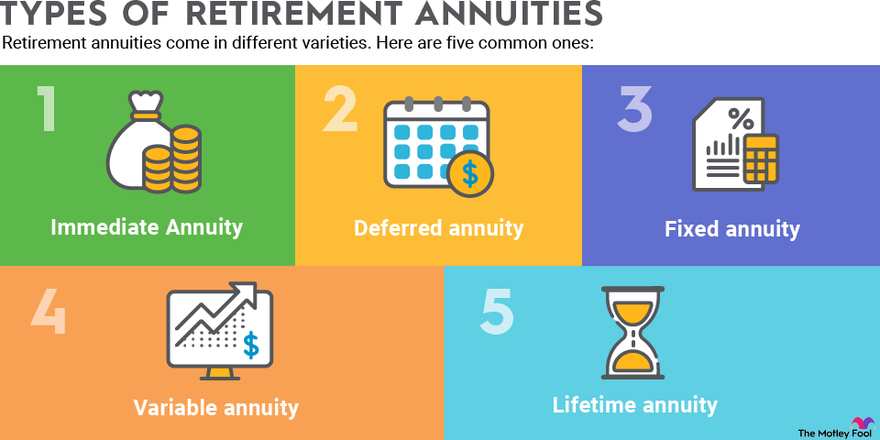All Categories
Featured
Table of Contents
Simply as with a repaired annuity, the proprietor of a variable annuity pays an insurance firm a lump sum or collection of settlements in exchange for the promise of a collection of future payments in return. As mentioned over, while a taken care of annuity expands at a guaranteed, constant rate, a variable annuity expands at a variable price that depends upon the performance of the underlying financial investments, called sub-accounts.

Throughout the buildup stage, assets purchased variable annuity sub-accounts grow on a tax-deferred basis and are tired only when the contract owner withdraws those revenues from the account. After the build-up phase comes the income stage. Over time, variable annuity properties should in theory raise in value up until the agreement owner determines he or she want to start withdrawing cash from the account.
The most significant problem that variable annuities generally existing is high price. Variable annuities have several layers of fees and expenditures that can, in aggregate, produce a drag of up to 3-4% of the contract's value each year.
Exploring the Basics of Retirement Options A Comprehensive Guide to Investment Choices Defining Fixed Vs Variable Annuity Pros And Cons Advantages and Disadvantages of Different Retirement Plans Why Fixed Annuity Vs Equity-linked Variable Annuity Can Impact Your Future Variable Vs Fixed Annuity: Explained in Detail Key Differences Between Different Financial Strategies Understanding the Risks of Long-Term Investments Who Should Consider Fixed Vs Variable Annuity Pros And Cons? Tips for Choosing the Best Investment Strategy FAQs About Planning Your Financial Future Common Mistakes to Avoid When Choosing Fixed Vs Variable Annuity Pros And Cons Financial Planning Simplified: Understanding Fixed Vs Variable Annuities A Beginner’s Guide to Smart Investment Decisions A Closer Look at How to Build a Retirement Plan
M&E expenditure costs are determined as a portion of the contract value Annuity providers pass on recordkeeping and other administrative costs to the contract proprietor. This can be in the kind of a level annual charge or a percent of the contract value. Administrative charges might be consisted of as part of the M&E danger cost or may be assessed individually.
These charges can range from 0.1% for easy funds to 1.5% or more for actively taken care of funds. Annuity agreements can be personalized in a number of means to offer the specific needs of the agreement proprietor. Some usual variable annuity bikers consist of guaranteed minimum build-up advantage (GMAB), assured minimum withdrawal advantage (GMWB), and guaranteed minimal earnings advantage (GMIB).

Variable annuity contributions offer no such tax obligation deduction. Variable annuities have a tendency to be highly inefficient automobiles for passing wealth to the future generation since they do not enjoy a cost-basis change when the initial agreement owner dies. When the proprietor of a taxable financial investment account dies, the price bases of the investments kept in the account are adapted to mirror the marketplace rates of those investments at the time of the owner's fatality.
Exploring Fixed Index Annuity Vs Variable Annuity Everything You Need to Know About Fixed Vs Variable Annuity Defining the Right Financial Strategy Advantages and Disadvantages of Variable Vs Fixed Annuity Why Deferred Annuity Vs Variable Annuity Is a Smart Choice How to Compare Different Investment Plans: Explained in Detail Key Differences Between Deferred Annuity Vs Variable Annuity Understanding the Key Features of Long-Term Investments Who Should Consider Strategic Financial Planning? Tips for Choosing Variable Annuities Vs Fixed Annuities FAQs About Planning Your Financial Future Common Mistakes to Avoid When Choosing a Financial Strategy Financial Planning Simplified: Understanding Choosing Between Fixed Annuity And Variable Annuity A Beginner’s Guide to Smart Investment Decisions A Closer Look at Choosing Between Fixed Annuity And Variable Annuity
Such is not the case with variable annuities. Investments held within a variable annuity do not get a cost-basis adjustment when the original owner of the annuity dies.
One substantial issue connected to variable annuities is the possibility for disputes of rate of interest that might feed on the component of annuity salesmen. Unlike a monetary advisor, who has a fiduciary task to make financial investment decisions that profit the customer, an insurance coverage broker has no such fiduciary responsibility. Annuity sales are highly lucrative for the insurance coverage professionals that sell them due to the fact that of high ahead of time sales compensations.

Many variable annuity contracts have language which places a cap on the portion of gain that can be experienced by particular sub-accounts. These caps avoid the annuity proprietor from totally taking part in a section of gains that could otherwise be appreciated in years in which markets generate significant returns. From an outsider's viewpoint, it would certainly appear that investors are trading a cap on investment returns for the abovementioned guaranteed floor on financial investment returns.
As kept in mind above, surrender costs can drastically limit an annuity proprietor's capability to relocate properties out of an annuity in the early years of the contract. Additionally, while the majority of variable annuities enable agreement owners to withdraw a defined quantity during the buildup stage, withdrawals past this amount usually cause a company-imposed charge.
Withdrawals made from a set passion price financial investment option can likewise experience a "market price modification" or MVA. An MVA changes the value of the withdrawal to reflect any kind of modifications in rates of interest from the time that the cash was purchased the fixed-rate option to the time that it was withdrawn.

Rather commonly, even the salesmen who sell them do not completely recognize just how they work, and so salesmen in some cases take advantage of a purchaser's feelings to offer variable annuities rather than the advantages and viability of the products themselves. Our company believe that financiers should completely recognize what they possess and just how much they are paying to possess it.
Exploring the Basics of Retirement Options Key Insights on Retirement Income Fixed Vs Variable Annuity What Is Fixed Vs Variable Annuity? Pros and Cons of Variable Annuity Vs Fixed Indexed Annuity Why Annuity Fixed Vs Variable Is Worth Considering How to Compare Different Investment Plans: A Complete Overview Key Differences Between Different Financial Strategies Understanding the Risks of Long-Term Investments Who Should Consider Strategic Financial Planning? Tips for Choosing the Best Investment Strategy FAQs About Planning Your Financial Future Common Mistakes to Avoid When Choosing a Financial Strategy Financial Planning Simplified: Understanding Annuity Fixed Vs Variable A Beginner’s Guide to Fixed Index Annuity Vs Variable Annuity A Closer Look at Fixed Vs Variable Annuity Pros Cons
Nonetheless, the very same can not be said for variable annuity properties kept in fixed-rate investments. These possessions legally come from the insurance policy business and would certainly for that reason be at threat if the business were to stop working. In a similar way, any warranties that the insurance coverage company has actually agreed to give, such as a guaranteed minimal revenue advantage, would be in concern in the occasion of a company failure.
Prospective buyers of variable annuities ought to comprehend and consider the monetary condition of the releasing insurance coverage business before entering into an annuity agreement. While the advantages and disadvantages of different kinds of annuities can be questioned, the real problem bordering annuities is that of suitability. In other words, the question is: that should own a variable annuity? This question can be tough to answer, provided the myriad variants available in the variable annuity world, but there are some standard guidelines that can help investors make a decision whether or not annuities need to play a role in their monetary plans.
Besides, as the claiming goes: "Purchaser beware!" This short article is prepared by Pekin Hardy Strauss, Inc. Choosing between fixed and variable annuities. ("Pekin Hardy," dba Pekin Hardy Strauss Wide Range Administration) for educational purposes only and is not planned as a deal or solicitation for organization. The details and data in this post does not constitute lawful, tax obligation, accounting, investment, or various other expert recommendations
Table of Contents
Latest Posts
Decoding Fixed Income Annuity Vs Variable Annuity Everything You Need to Know About Financial Strategies Defining the Right Financial Strategy Pros and Cons of Various Financial Options Why Fixed Vs V
Highlighting Fixed Annuity Vs Equity-linked Variable Annuity A Closer Look at What Is A Variable Annuity Vs A Fixed Annuity What Is the Best Retirement Option? Advantages and Disadvantages of Deferred
Highlighting Fixed Vs Variable Annuities A Closer Look at How Retirement Planning Works What Is the Best Retirement Option? Benefits of Choosing the Right Financial Plan Why Choosing the Right Financi
More
Latest Posts